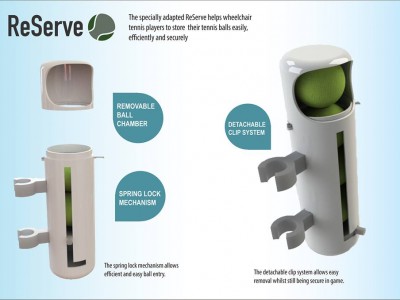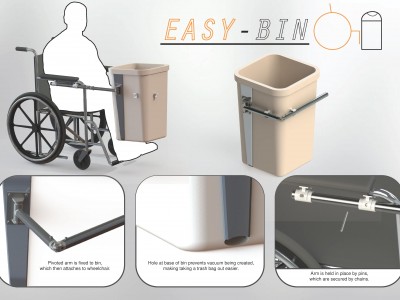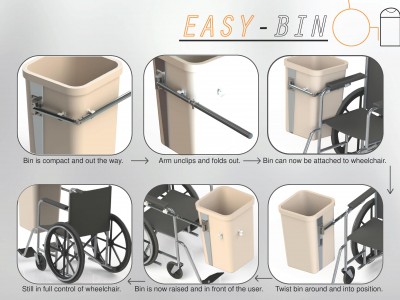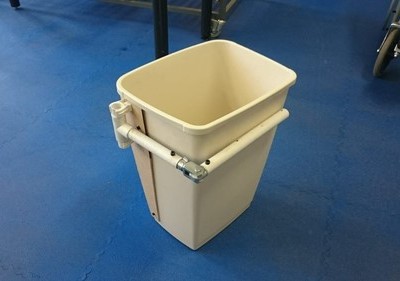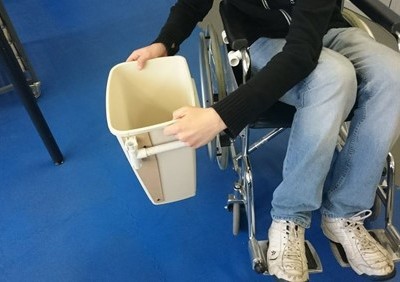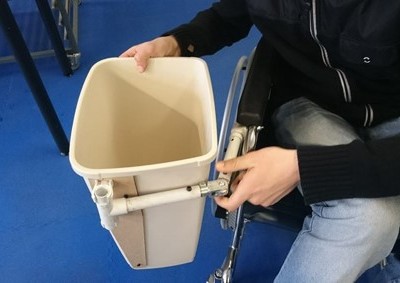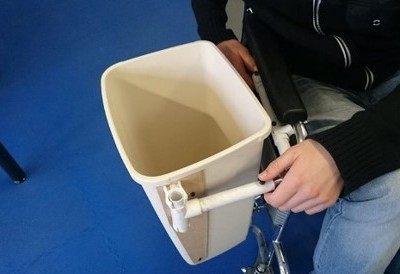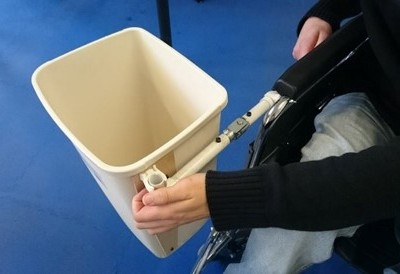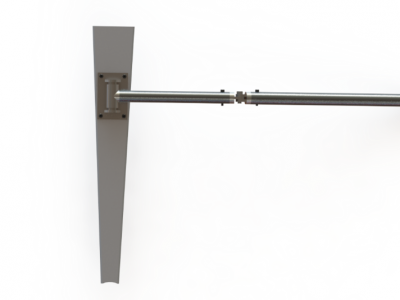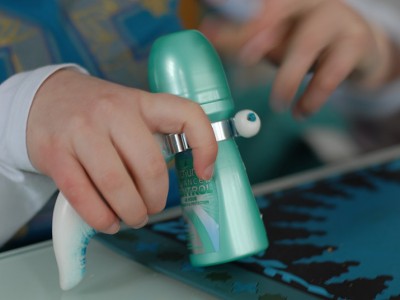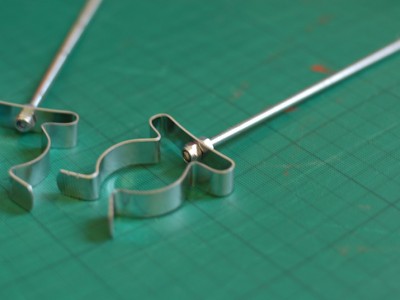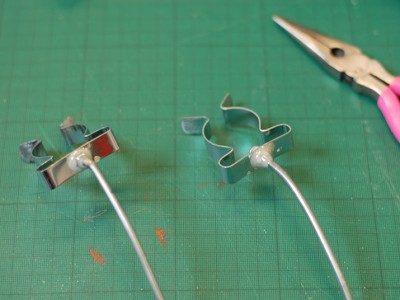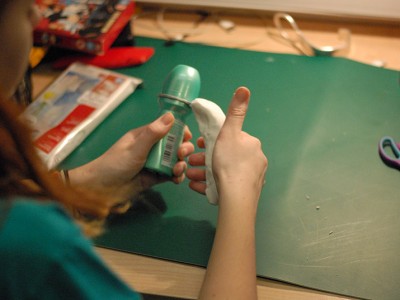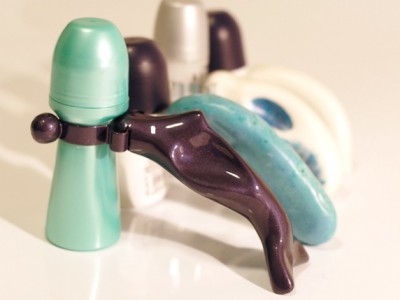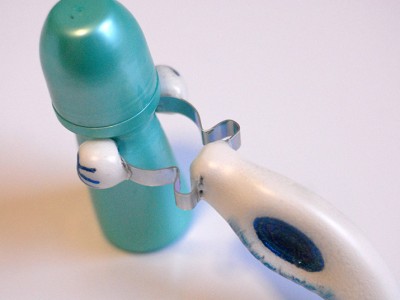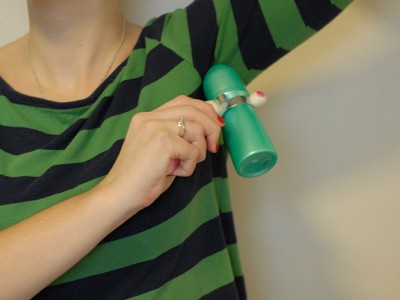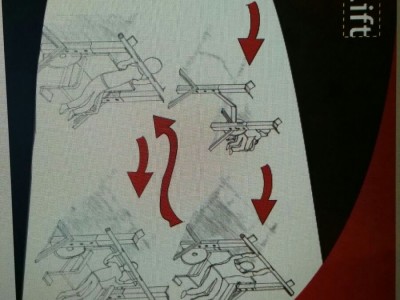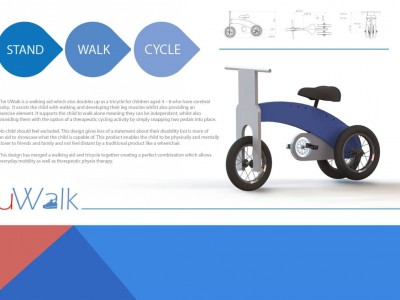
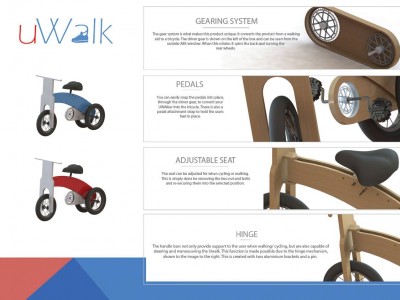
The Final Product
We have redesigned a walking aid for children diagnosed with Cerebral Palsy. We have focused on the age range of 4 – 8 years old. The aim of this product is to provide help to the children with the condition in everyday mobility difficulties. We understand that there are currently a wide range of successful mobility devices for this condition however, we found these products not be user friendly or aesthetically pleasing. For this reason we redesigned the cerebral Palsy walking frame and chair, and incorporated a tricycle to allow the user to cycle. This is a common therapeutic hobby for children with cerebral palsy, so we thought it was an appealing and necessary element to add to the product.
Features and Functions
The final product is displayed in the image to the left. The product is constructed from 5-layer plywood. Using plywood provides many benefits to the products function. Not only is it widely available, but also it is also durable and strong, meaning it can with stand the weight applied from the user. We decided to use specific plywood, which is bonded with a synthetic resin, as this then makes it waterproof.
The product includes adjustable seating to allow the user to change mobility methods, from walking to cycling. The purpose of this is to create a more suitable distance when the user wants to use the pedals. This is adjusted using the holes for the pegs that run down the main frame. The user will remove the pegs provided and align the seat in to the position that best suits the, before reapplying the pegs into the holes to secure into place.
The products steering works through a hinge system constructed using a sheet metal bracket that turns on a vertical axle. This is shown in the image displayed on the left. The joints on the image to the right are attached to the back of the front panel. These are handmade pieces, which are screwed to the surface of the front panel. A 3mm steel bar is then inserted through all the joints. Not only does this hold the two sections together but it also creates a pivot.
The gear system is what makes this product unique. It converts the product from a walking aid to a tricycle, simply by inserting pedals into the driver gear.
The cross sectional view on the image to the left shows how this mechanism functions. The gear on the left is the driver gear. This can be seen from outside the casing through the transparent ABS laser cut window. This is connected to the following gear with a bicycle chain. Both the driver gear and following gear are the same size with the same number of teeth. This means how many rotary motions the driver gear is turned, the following gear will turn the same amount of rotations. The back axle holds two fixed wheels on either side of the gear casing. This if for added stability and balance when the user is walking. The back axle is also fixed to the follower gear to allow the wheels to turn when the driver gear is moved with rotational movements from the pedals. This axle is made using 10mm steel tubing (hollow, wall thickness 3mm). All wheels from this product are up-cycled children’s bicycle wheels. The front wheel of the product is an up-cycled child’s tricycle wheel. The actual wheel itself is not fixed to the front axle. Only the bearing section is attached. This allows the wheel to rotate without the axle turning. This was useful because the front frame has very little space to attach a rotating axle to. Instead the axle was bolted straight to the back of the frame. The front axle is made from 5mm steel. It was turned and cut on the lathe to get it to the correct thickness and length.
Anthropometrics and Data
Anthropometrics influenced the design majorly when looking at what shapes and sizes to use for the frame and wheels. We had to consider a number of aspects in the design and how they would vary depending on the users sizing. Looking at the highlighted area on the graphs to below, it indicated our target markets (4-8) average weight and height.
Manufacturing processes
Manufacture for the frame is relatively easy. This is one of the main benefits of using plywood, as it is so easy to machine. The main body, front panel and gear box casing are all laser cut from a sheet of five layered Plywood. A laser cutting machine uses less energy to run than most alternative methods, whilst still being efficient to maintain. They are also designed to run without human supervision making it very time effective. If a laser cutting machine is not available, the parts can be cut using a band saw. Both processes would still require a hand finish to the edges for safety precautions. Sheet bending is required to form the bracket that will join the front panel and the main frame together. A brake machine will be needed to accomplish the 90 degree angles needed. This part could be brought in but is cheaper to manufacture if the machine is available.
How the product suits the user
There are many things to consider when designing for a young child with Cerebral Palsy. Every child will have different weak points in their body and we must make sure they have the support needed to overcome said weakness.
The bike is low riding and features removable pedals. By removing the pedals we are making it easier to walk with the bike as a support system, the pedals would only obstruct the movement of the child. Having a lightweight support system with a seat means that when the child gets too tired from walking they can rest and sit. They could even sit while pushing themselves along.
On the pedals we have included a strap to secure the foot to the pedal. By doing this we making it easier for the child to continuously make a cycling motion without worry of trying to keep their foot on the pedals.
Due to it being a tricycle, and having three wheels, there is more stability than if it were just a bike with two wheels. This means that the child does not need to balance the bike; in fact the bike will provide balance for the child. Having this extra balance has mean that we can have pedals that the child straps into as there is no worry of them losing balance and toppling the tricycle.
The handlebars have to be appropriate for both cycling and walking. So we considered if it had to be extendable or not, and after taking anthropometrics into consideration we designed the correct distance for the user meaning there was no need for the extension.
The seat has to have the most support, requiring mainly lower back support. It is cushioned and padded in the required areas for maximum comfort and support. The seat is adjustable so that it can be put in five positions to suit the use, whether this is using the product as a walking aid or as a tricycle.
We have made sure that the tricycle has a very low centre of gravity and is extremely stable, this is highly important as if the child were to lose stability and lean, or become ridged it is important that the bike will not tip over. We want the user and their parents to have complete confidence in the aid.
From our research of existing products we saw that they all seemed very clinical and not very child friendly. To make our product more appealing to a young child we have chosen materials that can be coloured easily, making it available in many colours. We focused on primary colours initially to show how simple colours can make the bike stand out.
We are also hoping that as it is wood we could provide the child with stickers so that they can even personalise their bike, as it is wood the stickers could be easily sanded off and painted over if the child changed their mind on what they wanted on their bike. Our product encourages the child to walk from an earlier age, building muscles, flexibility and confidence. When muscle is built and exercised more often the child is less likely to have stiff muscles, which can be extremely painful.
“Physical therapy empowers the child physically and emotionally, and sets the stage for entering adulthood as an independent individual.” (What are the benefits of physical therapy?)

